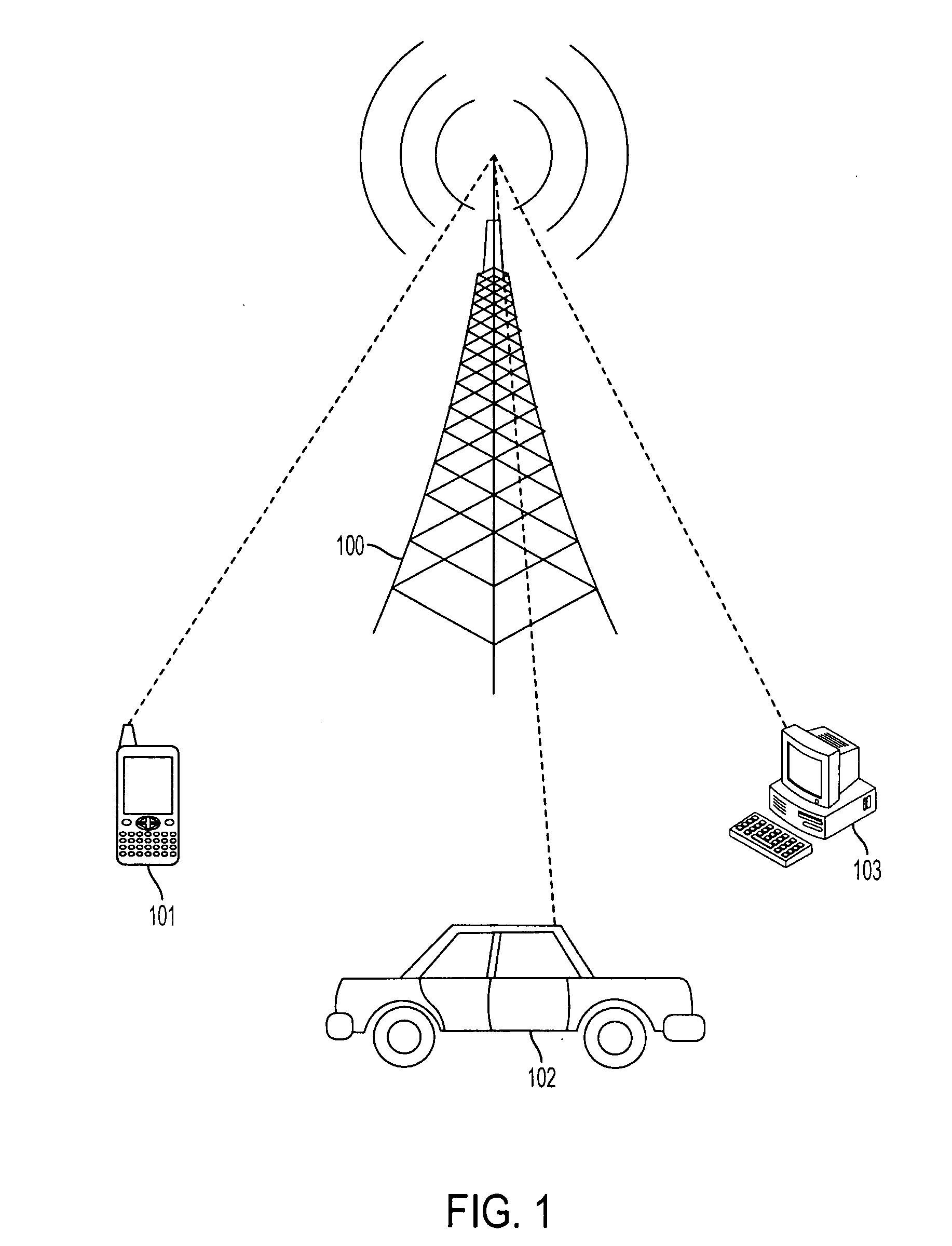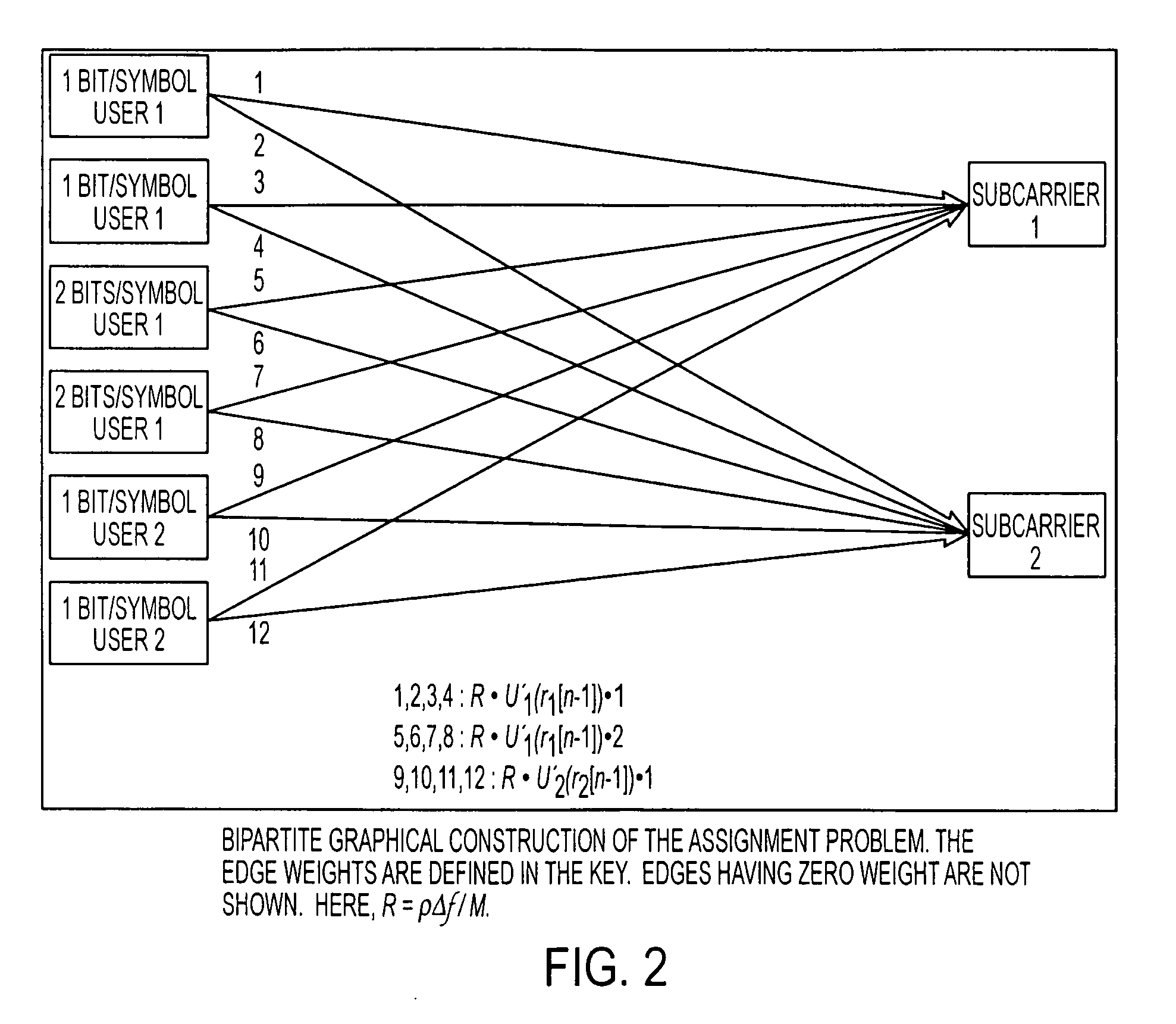Cross layer network optimization for OFDMA systems using message passing algorithm
a message passing algorithm and cross-layer network optimization technology, applied in the field of cross-layer, can solve the problems of loss of spectral efficiency for the entire network, inability to obtain utility functions through theoretical derivations, and simple approach to maximize total throughput
- Summary
- Abstract
- Description
- Claims
- Application Information
AI Technical Summary
Benefits of technology
Problems solved by technology
Method used
Image
Examples
Embodiment Construction
[0027]FIG. 1 illustrates a wireless communication system. A base station 100 may be in communication with a plurality of users, among which a mobile phone 101, a GPS system in a car, and a computer 103. 0
[0028]Cellular-based wireless transmission technologies employing orthogonal frequency division multiple access (OFDMA), allow multiple users to transmit in the same time slot and dynamically share the bandwidth and data transmission rate among them.
[0029]The methods and devices described here do not trade off the fairness and efficiency of the resource allocation, and also build a bridge between the physical and media access control (MAC) layers in order to achieve cross-layer optimization in an orthogonal frequency division multiple access (OFDMA) wireless network.
[0030]OFDMA divides the entire channel into many orthogonal narrowband sub-channels in order to combat frequency-selective multipath fading and to support high data rates. Furthermore, in OFDMA wireless networks, differe...
PUM
 Login to View More
Login to View More Abstract
Description
Claims
Application Information
 Login to View More
Login to View More - R&D
- Intellectual Property
- Life Sciences
- Materials
- Tech Scout
- Unparalleled Data Quality
- Higher Quality Content
- 60% Fewer Hallucinations
Browse by: Latest US Patents, China's latest patents, Technical Efficacy Thesaurus, Application Domain, Technology Topic, Popular Technical Reports.
© 2025 PatSnap. All rights reserved.Legal|Privacy policy|Modern Slavery Act Transparency Statement|Sitemap|About US| Contact US: help@patsnap.com



